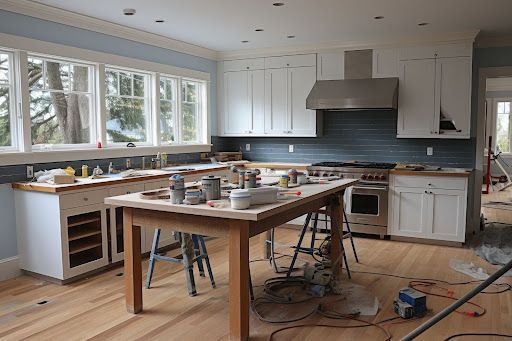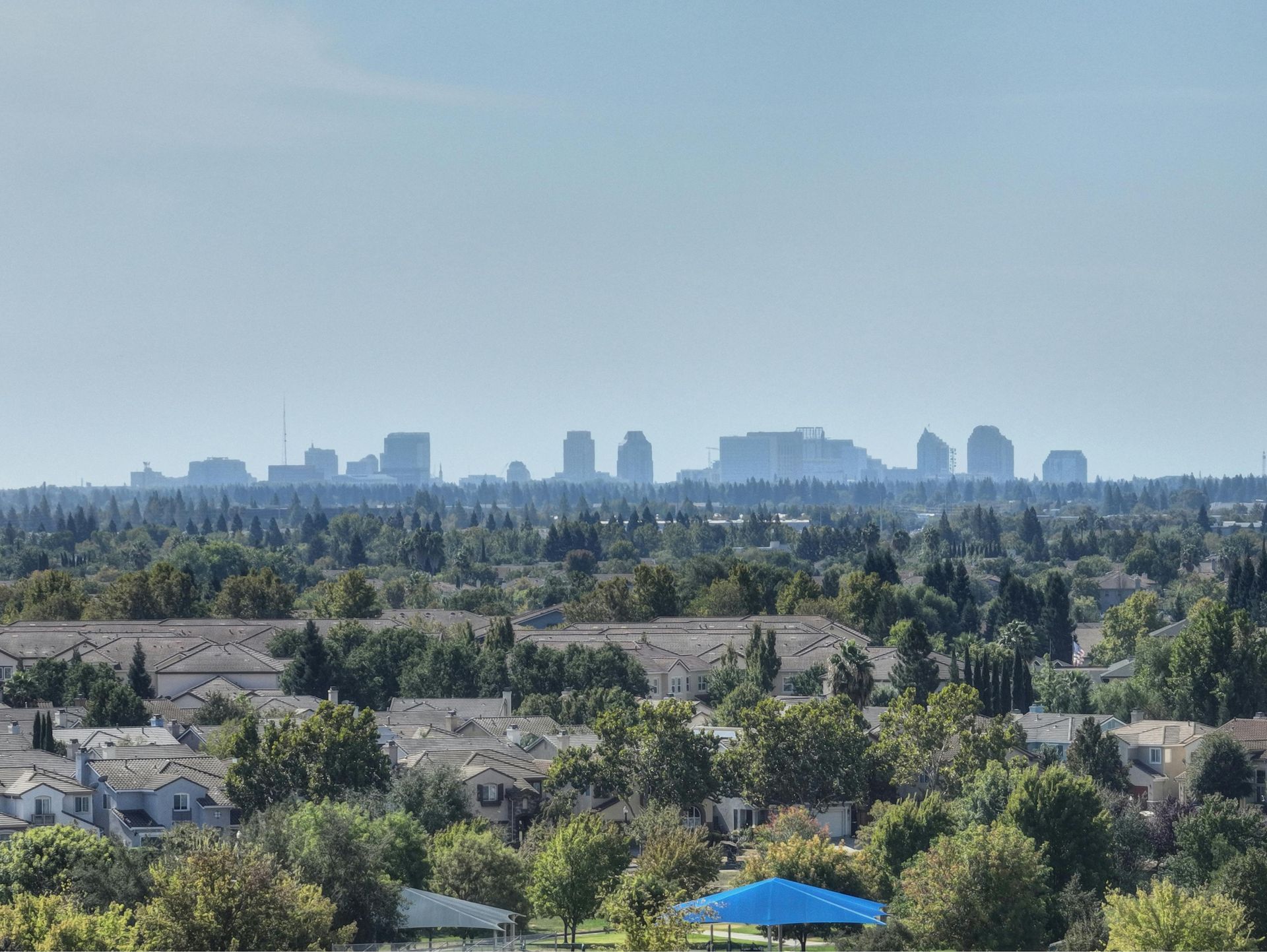Siding Secrets: Expert Tips for Year-Round Upkeep and Longevity
Maintaining the exterior of your home is crucial to ensuring it looks good and stands strong against the elements no matter the season. Whether it’s the height of summer or the depths of winter, there are simple, yet effective strategies that can keep your siding in top condition
Understanding Different Siding Materials
Siding not only defines the look of your home but also provides critical protection from the elements. In Northern California, the siding must withstand a range of weather conditions, which is why it’s essential to understand the specific requirements for maintaining different siding materials for both aesthetic appeal and longevity.
Vinyl Siding: Characteristics and Common Issues
Vinyl siding is favored for its cost-effectiveness and low maintenance. It’s resistant to pests and rot, making it an ideal choice for many homeowners in the Sacramento region. It can be prone to cracking under severe impact, especially in colder temperatures, and may fade with prolonged exposure to sunlight.
Wood Siding: Maintenance Needs and Longevity
Wood siding offers a timeless appeal with its natural beauty but requires more maintenance to prevent issues such as moisture damage, warping, and insect infestation. Regular staining or painting is needed to preserve its resilience and maintain its classic look.
Fiber Cement Siding: Durability and Care
Fiber cement siding provides a great balance of durability and versatility, mimicking the appearance of wood or stucco. It stands up well to the Sacramento climate but still requires periodic painting to protect against moisture absorption and to keep it looking fresh.
Aluminum Siding: Advantages and Upkeep Challenges
Aluminum siding is robust, fire-resistant, and not susceptible to insect damage. It’s lightweight and relatively easy to install. While it doesn’t need painting as often as wood siding, it is prone to denting, and the protective coating may chalk or fade over time.
Spring Maintenance Strategies
With the winter retreat, spring is an opportune time for Sacramento homeowners to inspect and tend to their siding. A thorough check can uncover issues resulting from winter storms, ensuring minor problems don’t turn into extensive damage.
Post-Winter Damage Inspection
Inspect your siding for any visible signs of damage. Cracks, warping, and moisture penetration are common issues following wet and cold weather. Addressing these promptly can prevent more significant structural problems.
Cleaning Tips for Each Siding Material
Cleaning your siding not only improves curb appeal but also extends its life. For vinyl, a gentle soap solution and a soft-bristled brush can remove most dirt and grime. Wood siding may require a specialized cleaner to avoid stripping protective coatings, whereas fiber cement siding benefits from a mildew-resistant cleaner. Aluminum siding can be cleaned with a mixture of soap and water, but avoid abrasive tools that could scratch the surface.
Preparing for Pest Season
Spring also signals the start of pest season. Ensure that your siding is properly sealed and caulked to deter insects from nesting. Conduct a walk-around of your home, paying attention to any gaps or holes that may need attention. Learn more about pest control measures.
Landscaping Considerations to Protect Siding Integrity
The vegetation around your home should be managed to protect siding integrity. Trim back any overhanging branches or shrubs touching the siding; this not only prevents physical damage from plant growth but also reduces the risk of moisture being trapped against the siding surface.
Summer Upkeep
As the weather heats up, protecting your home’s siding from the intense Sacramento sun is crucial. UV exposure can lead to discoloration and material degradation. To maintain the integrity and appearance of your siding, consider these summer maintenance tips.
Protecting Siding from Sun Damage
Using sealants and UV-resistant treatments can significantly extend the lifespan of siding materials. Each type of siding has recommendations for specific products that work best to minimize ultraviolet damage. Be sure to reapply these treatments according to the manufacturer’s instructions to ensure continuous protection.
Importance of Proper Ventilation
Proper ventilation helps prevent heat buildup, which can cause vinyl and wood siding to warp or buckle. Ensure your attic and wall ventilation systems are functioning correctly to prevent heat-related damage to your siding.
Managing Moisture and Humidity
High humidity can be just as damaging as rain. Moisture from summer humidity can get trapped against the siding and cause rot, especially in wood siding. Regularly check for any signs of moisture penetration and ensure that gutters and downspouts are directing water away from the siding.
Regular Visual Inspections and Touch-Ups
Maintaining the aesthetic of your siding doesn’t just add to your home’s beauty; it also acts as a preventative measure against damage. Conduct regular visual inspections for chipping or fading and perform touch-ups as needed. A fresh coat of paint or stain on wood siding not only updates the look of your home but provides an additional protective layer against the elements.
Autumn Preparations
When autumn arrives, cooler temperatures and the anticipation of winter weather prompt a focus on preparation. Now is the time to ensure your home’s siding is secure and ready for what the coming months may bring.
Preparing for Colder Weather
Before the chill sets in, check that your siding has adequate insulation. Proper insulation helps maintain indoor temperatures and prevents problems such as ice dams, which can be detrimental to siding. Also, inspect and repair sealants around windows and door frames to prevent drafts and moisture infiltration.
Gutter Maintenance to Prevent Water Damage
Unclogged and well-maintained gutters are essential for protecting siding from water damage. Ensure that gutters are free of debris to prevent overflow and water from spilling onto your siding, which could lead to moisture issues.
Tree Trimming to Avoid Physical Damage
The cooling temperatures and weaker sun during autumn are excellent conditions for trimming back any overgrown foliage. Overhanging branches can scrape against siding during windy conditions, causing scratches and damage. Trimming these helps protect your siding from unnecessary wear.
Siding Inspection for Pest Nests and Removing Them
Autumn is also a time when pests may seek shelter, often behind siding. Thoroughly inspect for any signs of nests or insect activity. Be prompt in removing any nests to prevent pests from settling in and causing damage to your siding.
Winter Guarding Strategies
The winter season in Northern California can be challenging for home exteriors. Freezing temperatures, snow, and ice can all pose risks to the integrity of your siding. Preventive measures now can save costly repairs later.
Preventing Ice Dam Formation
Ice dams can form at the eaves of your roof and cause significant damage to both the roof and siding. Ensuring your attic is well-insulated and your roof is properly maintained are key steps to preventing this issue. Proper attic insulation helps reduce the chances of snow melting and refreezing at the roof’s edges. In turn, this prevention protects the siding below from water damage.
Managing Snow Accumulation Near Siding
Heavy snow accumulation can put pressure on your siding, leading to damage. Use safe snow removal techniques, such as a roof rake, to gently remove snow without contacting the siding itself. Be cautious to avoid scraping or denting your siding during snow removal.
Pre-Winter Inspection and Repairs
Conduct a thorough inspection of your siding before the onset of harsh winter weather. Look for any cracks or gaps that need to be repaired to prevent moisture from entering and causing freeze-thaw damage. Seal any gaps with an appropriate caulk or sealant. For more on managing freeze-thaw cycles, click here.
Tips for Siding Longevity
One of the best ways to ensure the longevity of your siding is through regular care and proactive maintenance, which not only maintains the appearance but also preserves the functionality of your home’s exterior.
Importance of Regular, Proactive Maintenance
Regular cleaning, inspections, and prompt repairs are key to extending the life of your siding. This is particularly true for areas exposed to severe weather or those that are difficult to reach and hence often overlooked.
Recommendations for Professional Inspections
While much of siding maintenance can be handled by homeowners, there are significant benefits to having periodic professional inspections. Professionals can identify potential issues that are not apparent to the untrained eye and provide solutions to address them before they escalate.
When to Consider Siding Replacement
Despite best efforts at maintenance, there comes a time when the siding will require replacement. If you notice widespread damage, such as rotting in wood, persistent moisture issues in fiber cement, or extensive dents and fading in aluminum or vinyl, it may be time to consider new siding. The investment in new siding can greatly enhance your home’s curb appeal and structural integrity.
Long-Term Benefits of Maintaining Siding’s Appearance and Functionality
Maintained siding not only looks good but also contributes to the overall energy efficiency and protection of your home. It’s an investment that pays dividends in both the short-term satisfaction and long-term value of your property.
Conclusion
We’ve covered the seasonal challenges your home’s siding faces and offered expert tips for its care. Remember, regular maintenance is the key to preserving your siding’s appearance and functionality. The effort you put into these year-round strategies will serve you well over the lifespan of your home.
If you’re seeking specialized advice or personalized maintenance plans for your home’s siding, don’t hesitate to reach out to a professional . Keep an eye out for any signs of damage or wear, and address them promptly.
The post Siding Secrets: Expert Tips for Year-Round Upkeep and Longevity appeared first on Vostok Construction.











